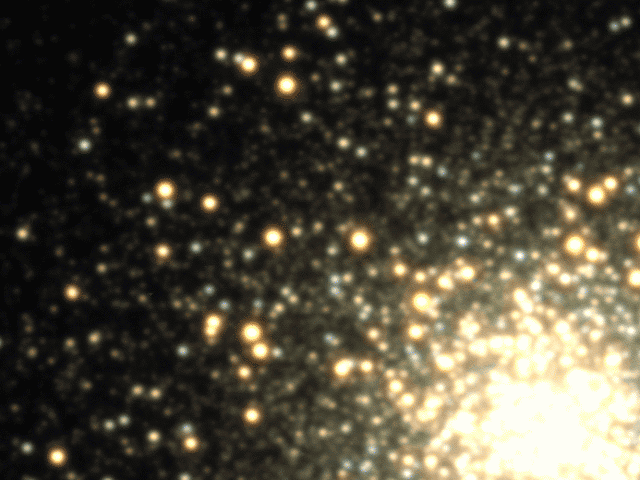Explanation: Star clusters appear constant because photographs of them are frozen in time. In reality, though, cluster stars swarm the center and frequently fluctuate in brightness. Although the time it takes for stars to cross a cluster is about 100,000 years, the time it takes for a star to fluctuate noticeably can be less than one night. In fact, the above time lapse movie of bright globular cluster M3 was taken over a single night. Most of the variable stars visible above are RR Lyrae stars, stars that can quickly double their brightness while becoming noticeably bluer. Furthermore, RR Lyrae stars vary their light in a distinctive pattern that allows unique identification. Lastly, since RR Lyrae stars all have the same intrinsic brightness, identifying them and measuring how dim they appear tells how far they are, since faintness means farness. These distances, in turn, help calibrate the scale of the entire universe.
1999 2000 2001 2002 2003 2004 2005 2006 2007 2008 2009 2010 2011 2012 2013 2014 2015 2016 2017 2018 2019 2020 2021 2022 2023 2024 2025 |
Yanvar' Fevral' Mart Aprel' Mai Iyun' Iyul' Avgust Sentyabr' Oktyabr' Noyabr' Dekabr' |
NASA Web Site Statements, Warnings, and Disclaimers
NASA Official: Jay Norris. Specific rights apply.
A service of: LHEA at NASA / GSFC
& Michigan Tech. U.
|
Publikacii s klyuchevymi slovami:
M 3 - globular cluster - Sharovoe skoplenie - Peremennye zvezdy
Publikacii so slovami: M 3 - globular cluster - Sharovoe skoplenie - Peremennye zvezdy | |
Sm. takzhe:
Vse publikacii na tu zhe temu >> | |
